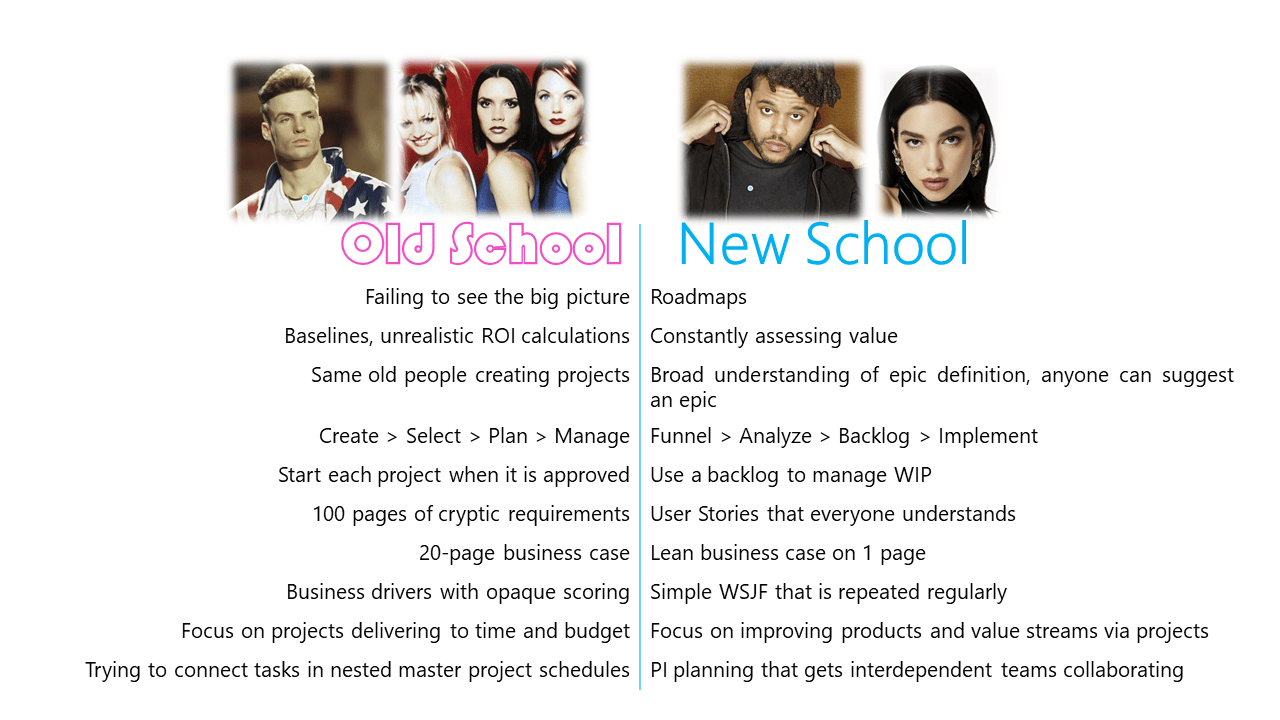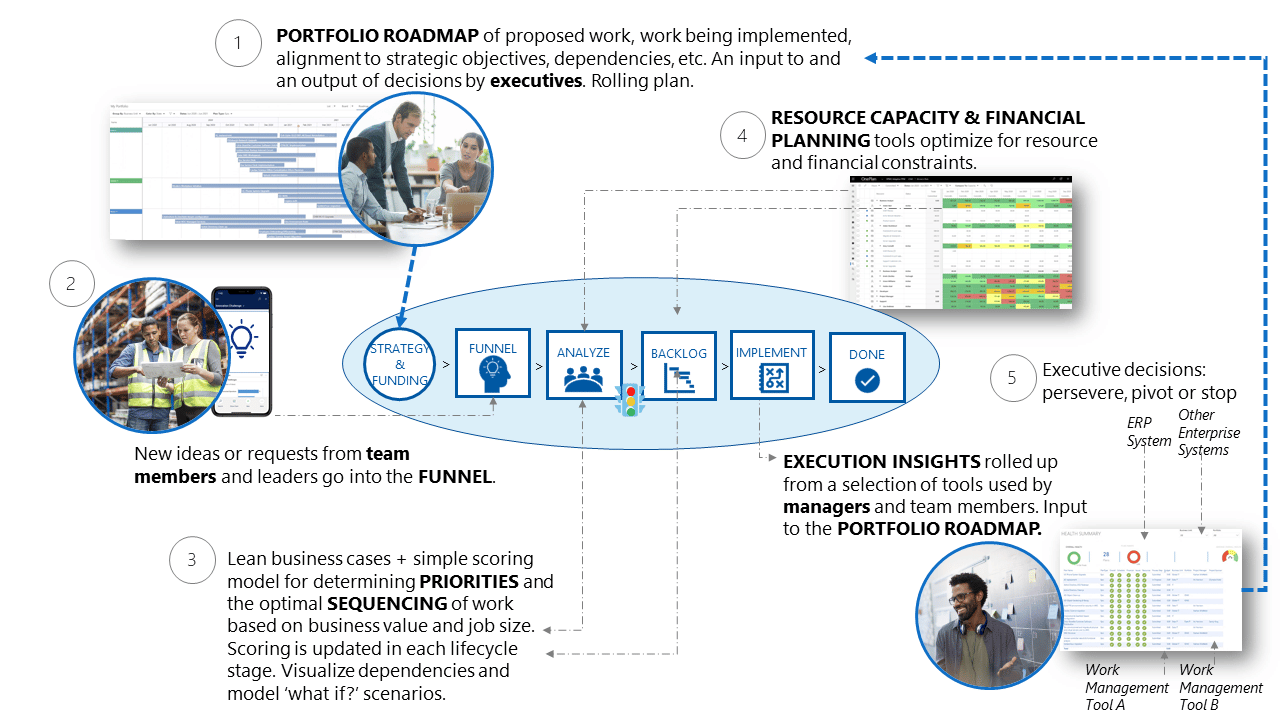Adaptive describes how some organizations manage portfolios of work, products, and projects. It’s a label for enterprises working to accommodate different methods and tools to create a solution that works best for them. This can be seen in Agile alongside waterfall project management or Microsoft Project living next door to Jira. Some see it as a transitional state, but perhaps organizations and society are destined to be in a permanently adaptive state—and this could be a healthy thing. After all, ‘adaptive’ is synonymous with ‘flexible’ and ‘evolving.’
Adaptive project and portfolio management may be a phase we go through on our way to some kind of organizational utopia. Others might argue that different and competing methodologies are the essence of healthy capitalism and natural selection. If everyone managed work with the same prescribed method and the same tools, we run the risk of stagnating and missing out on the friction that drives improvement and innovation. Just as different political persuasions co-exist in any free society, it’s quite possible that most organizations will always be adaptive. So why not embrace it?
Adaptive scenarios in project management commonly mean Agile enthusiasts versus Waterfall die-hards. Another equally common scenario is where execution teams are on board with a progressive approach, but business leadership is not. Instead of labeling things as ‘waterfall’ or ‘agile,’ let’s think instead of ‘old school’ (rigid) versus ‘new school’ (modern and dynamic):

What does it mean to apply this thinking in practice? For one thing, it means embracing a variety of methods and tools. Not that it should be a free-for-all when it comes to these variables—that would be hopelessly inefficient. Rather, take a design-thinking approach to identify your shortlist of options and build around those. Integrating systems has come a long way in recent years, so it is now feasible to map different processes and connect different tools to enable visibility and good decision-making.
Another successful application of Adaptive thinking can be seen in how the Lean Portfolio Management Framework (borrowed from SAFe) is a great set of principles to include at the center of any adaptive situation. Rather than forcing you into a purist Agile state, the basic framework of Lean Portfolio Management is good at enabling different processes to co-exist while giving organizations the benefits of Lean thinking. An example of good practice is shown below.

The most important thing to remember about adaptive teams is that they foster curiosity, empathy, dynamism, and flexibility. Regardless of our methodology, profession, and industry, we should all aspire to such growth.
About OnePlan
OnePlan Solutions is a trusted global provider of digital transformation services and solutions, specializing in portfolios of products, services, and projects. We are a “one-stop-shop” for business agility transformation in portfolio management, offering implementation services, education, training, customer support, and advisory services. We strive to maximize business outcomes and create the shortest path to value.
In 2019 and 2020, OnePlan was awarded the Global Microsoft Project and Portfolio Management Partner of the Year award, demonstrating breakthrough customer impact and solution innovation.



